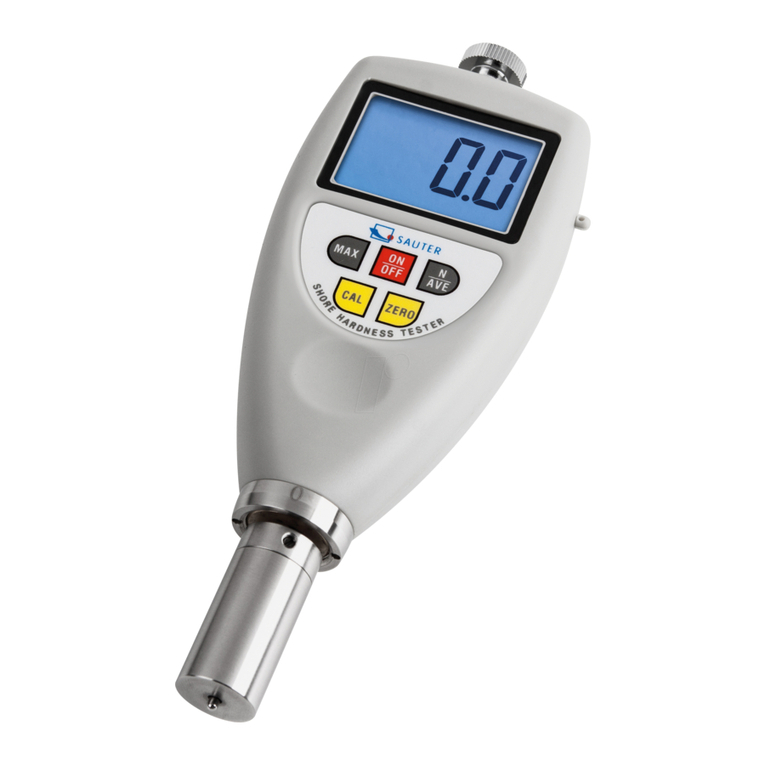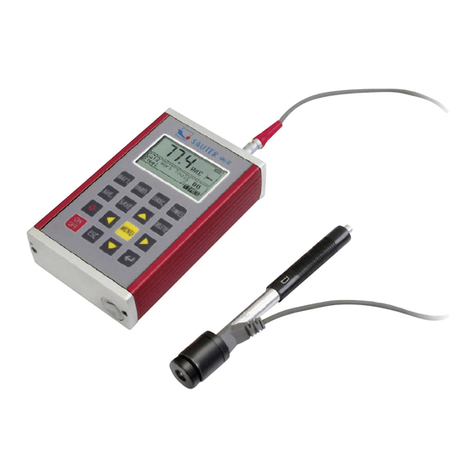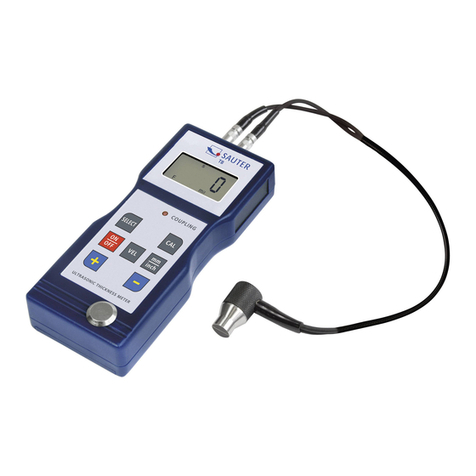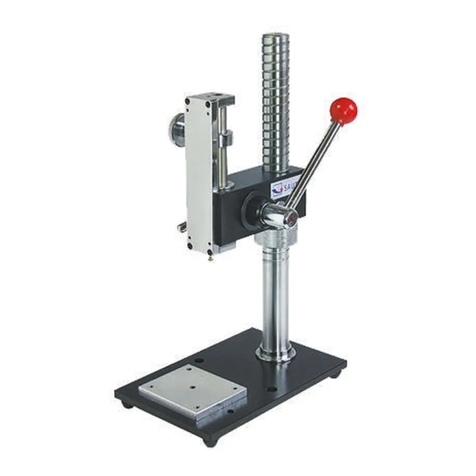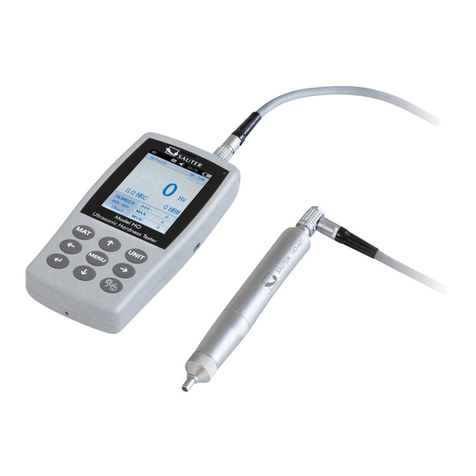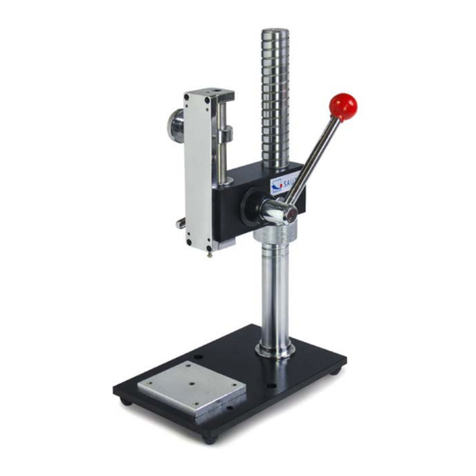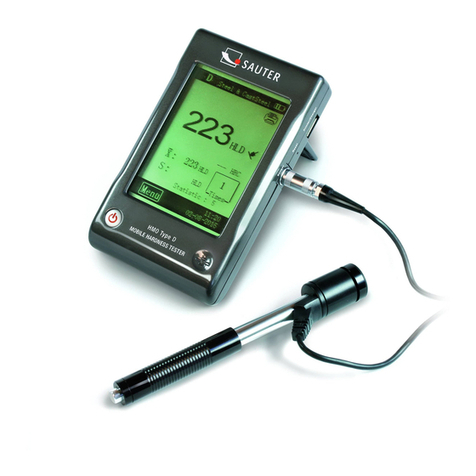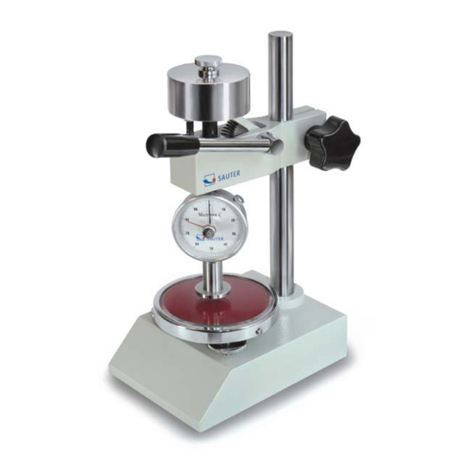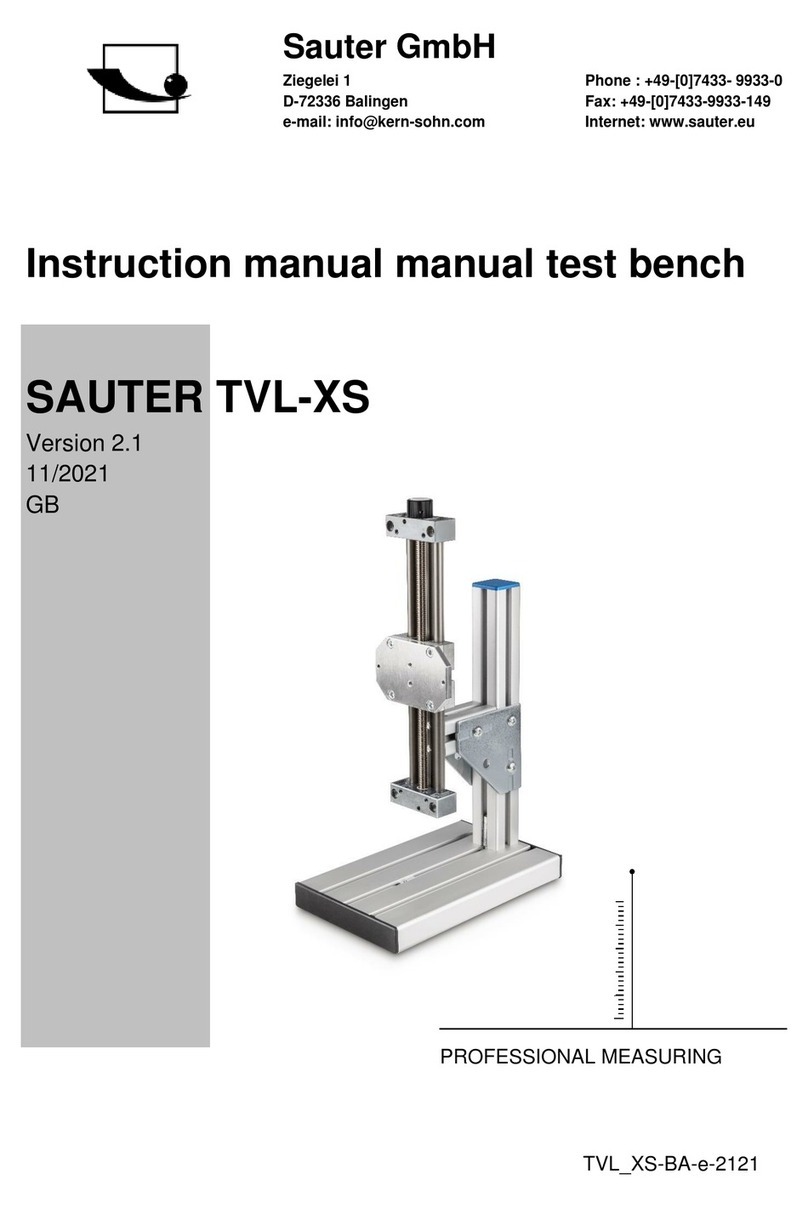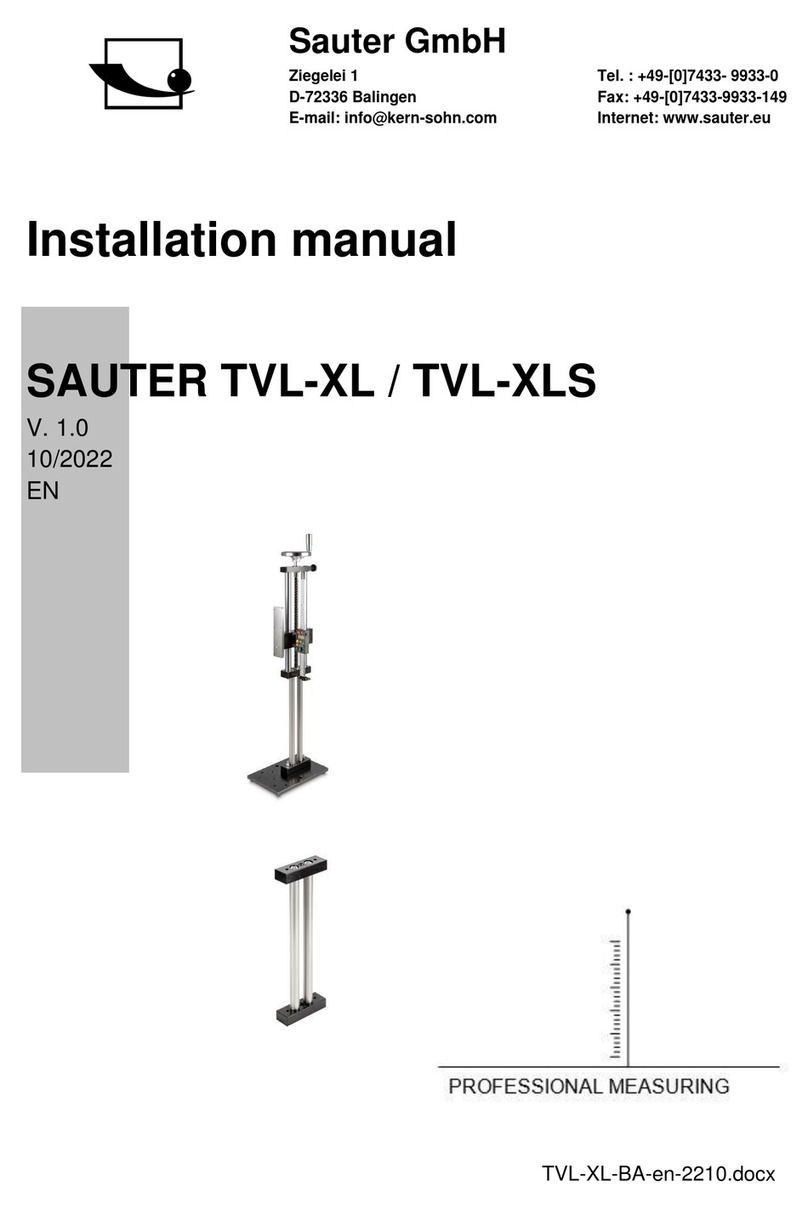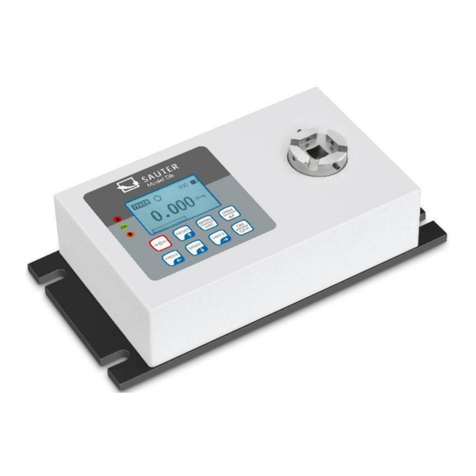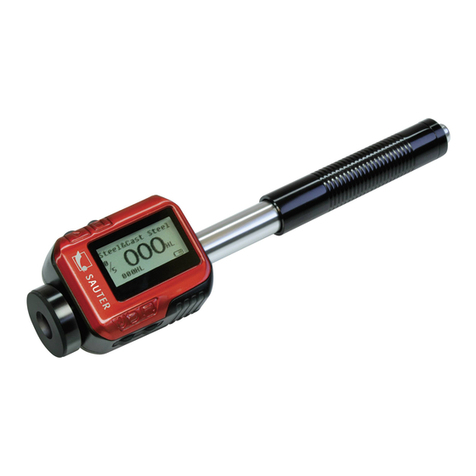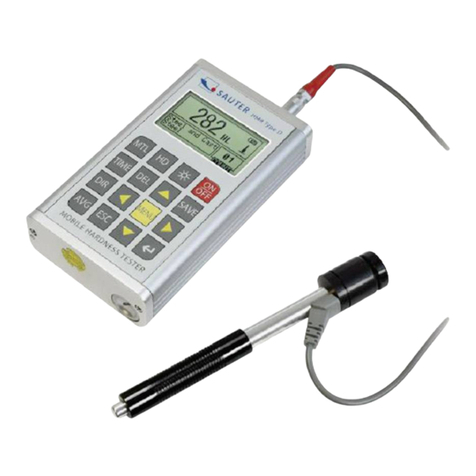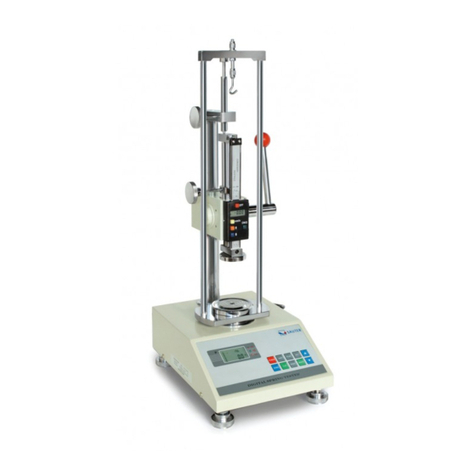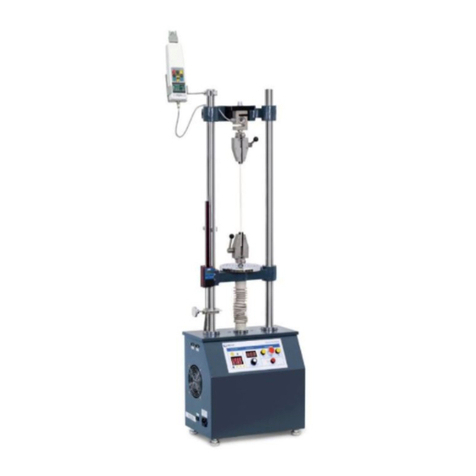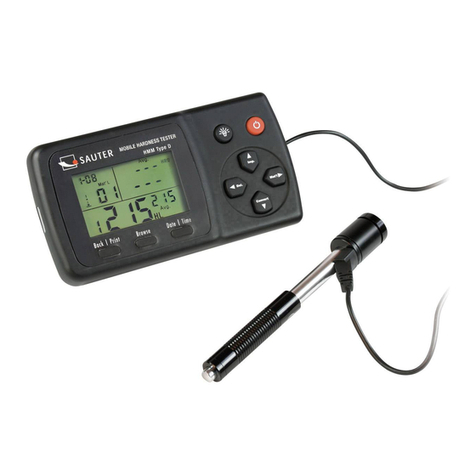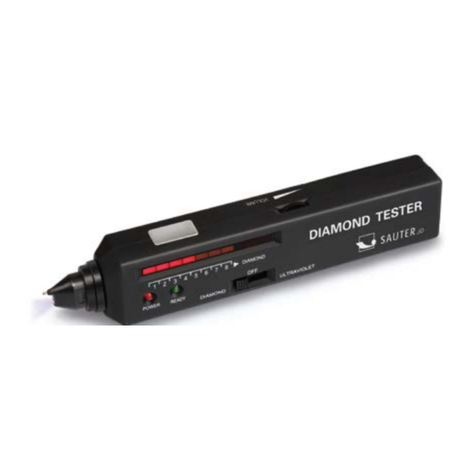Thank you for purchasing the mobile digital Leeb impact hardness tester from
SAUTER. We hope that you will be very satisfied with the high quality of this device
and its extensive functionality. For any questions, wishes and suggestions we are at
your disposal.
Table of contents:
1Before commissioning.................................................................................. 3
2Introduction.................................................................................................... 3
2.1 Measuring principle.................................................................................................................. 3
2.2 Structure.................................................................................................................................... 4
2.3 Keys........................................................................................................................................... 4
2.4 Display overview ...................................................................................................................... 5
2.5 Technical data........................................................................................................................... 5
3Test preparation............................................................................................. 6
3.1 Preparation of the test object.................................................................................................. 6
3.2 Sample thickness ..................................................................................................................... 7
3.3 Test procedure.......................................................................................................................... 7
3.3 Test execution .......................................................................................................................... 7
3.4 Browsing ................................................................................................................................... 8
3.5 Print test report......................................................................................................................... 8
4Settings........................................................................................................... 9
4.1 Material code............................................................................................................................. 9
4.2 Impact direction........................................................................................................................ 9
4.3 Scale .......................................................................................................................................... 9
5Service and maintenance............................................................................ 10
5.1 Periodic maintenance ............................................................................................................ 10
6Calibration.................................................................................................... 10
7Annexes........................................................................................................ 12
7.1 A-1 Conversion range ............................................................................................................ 12
7.2 A-2 Material Code ................................................................................................................... 12
7.3 A-3 Scope of Delivery............................................................................................................. 13
